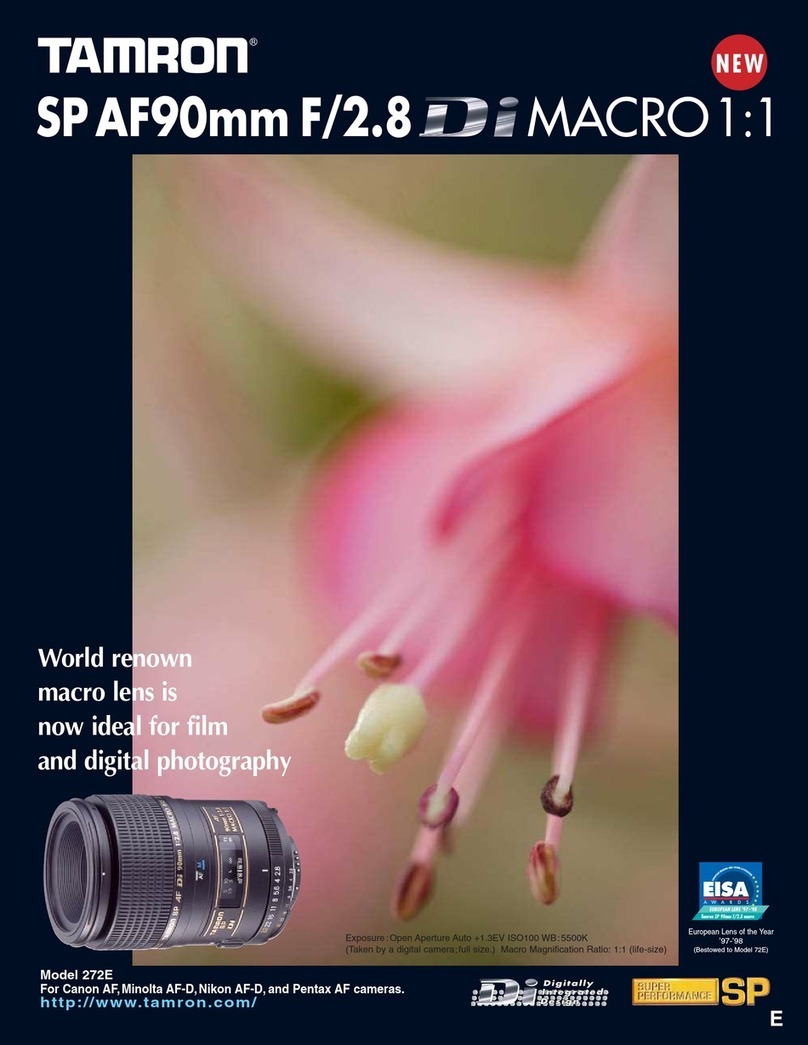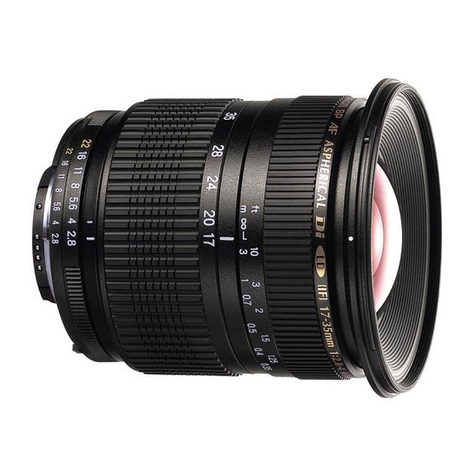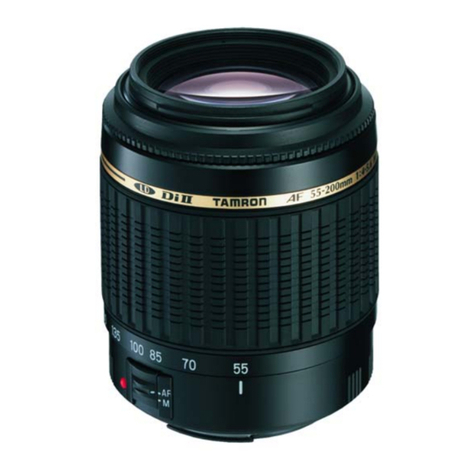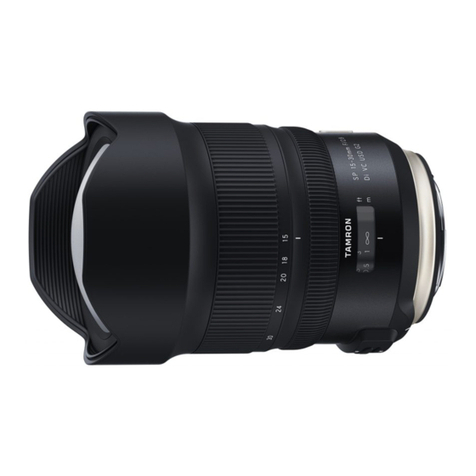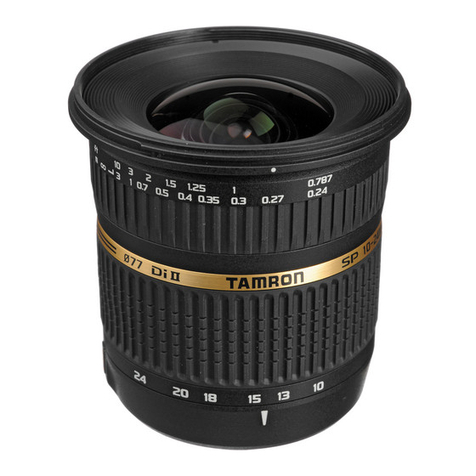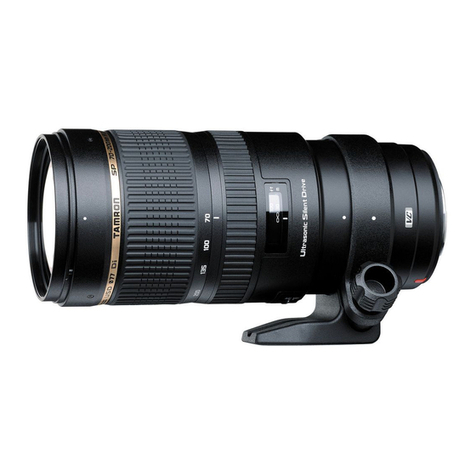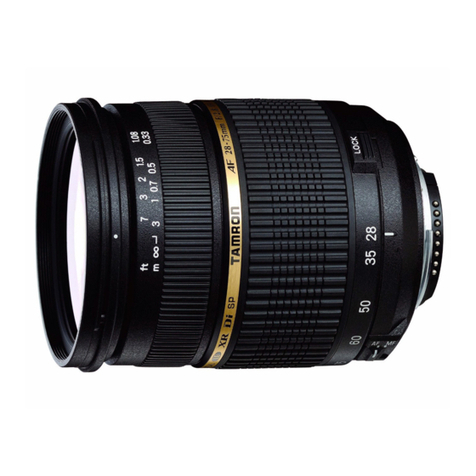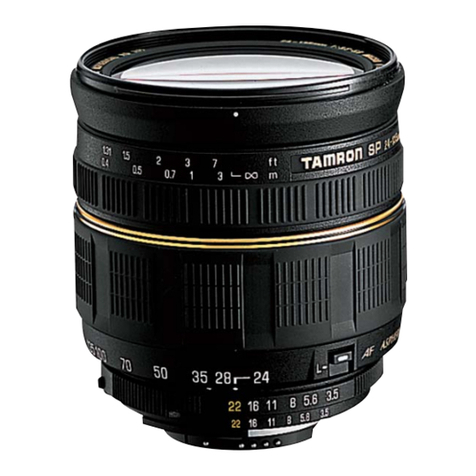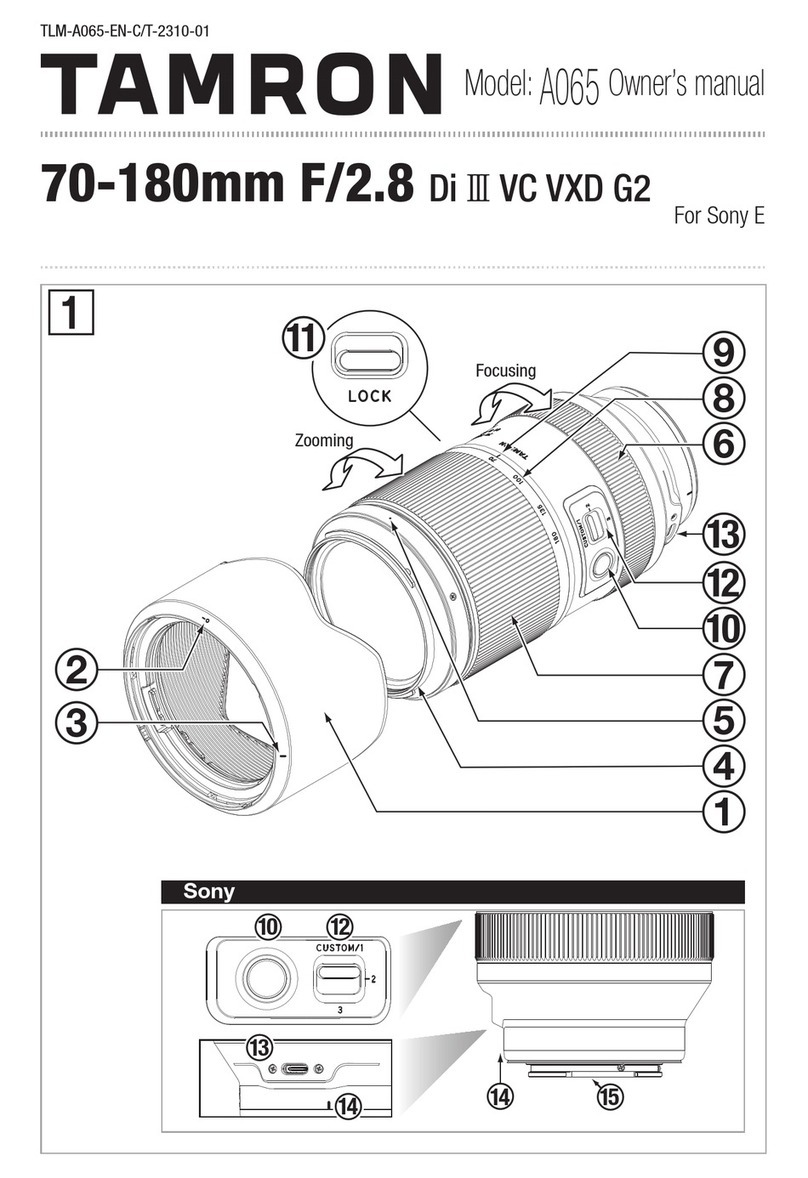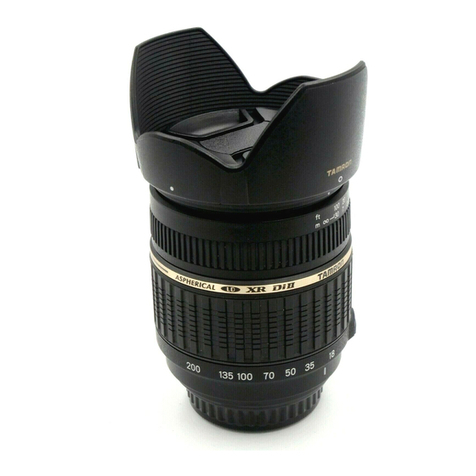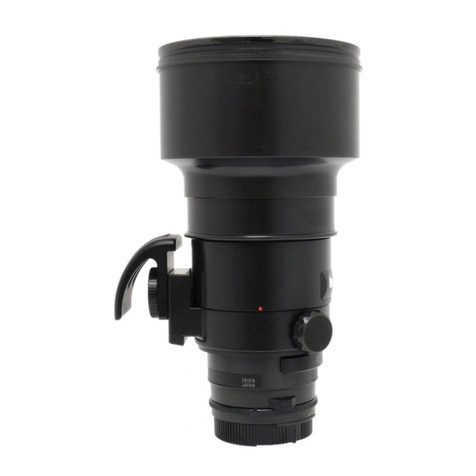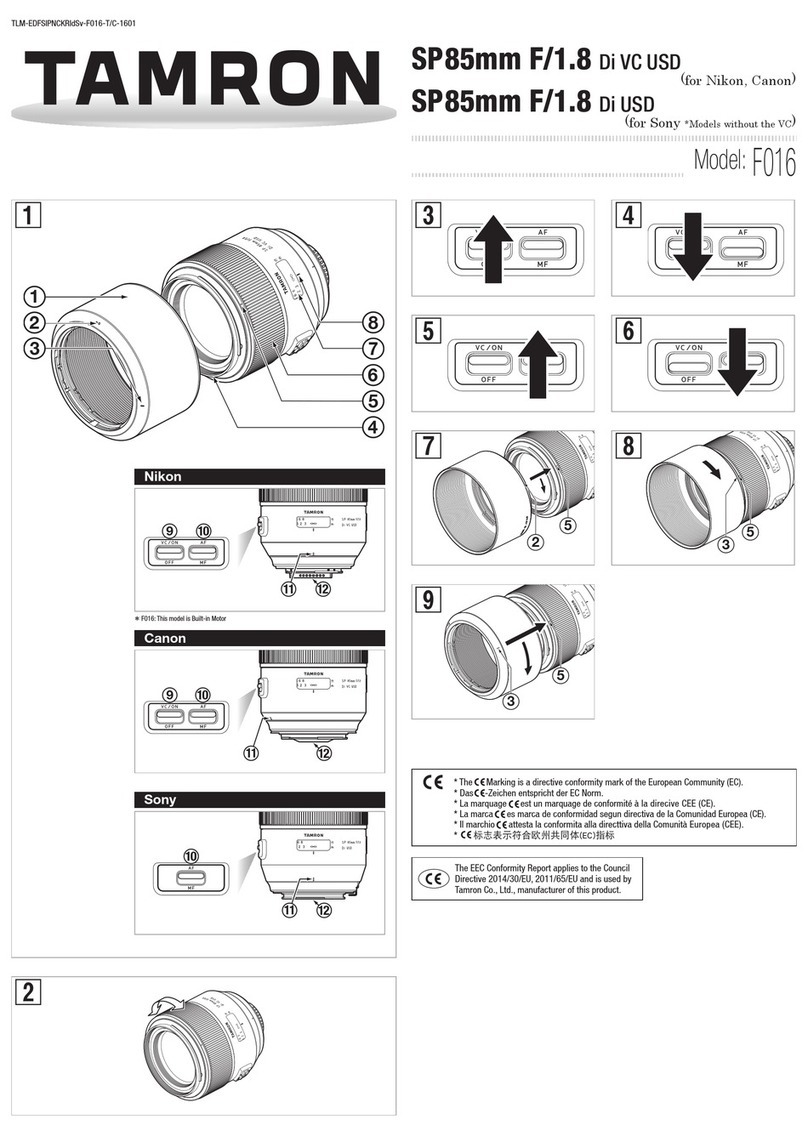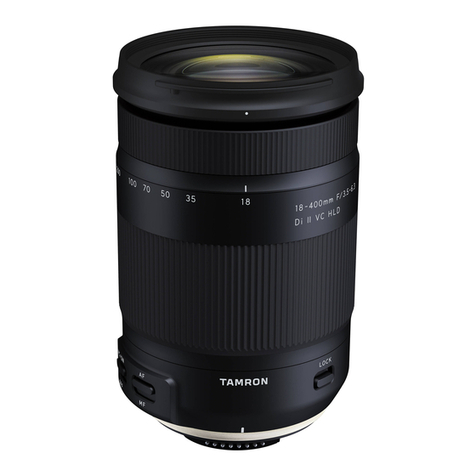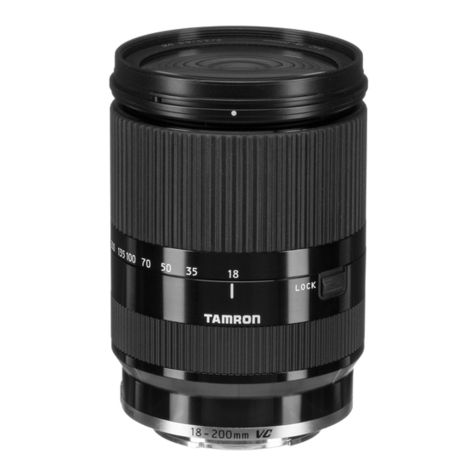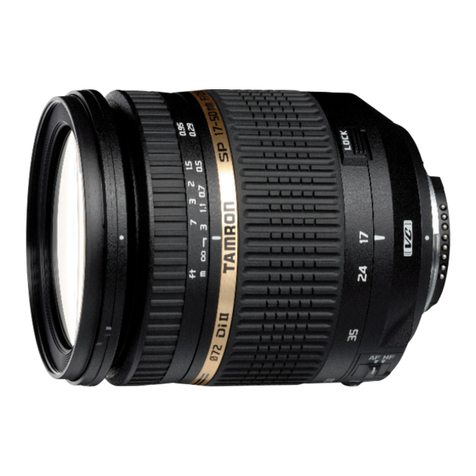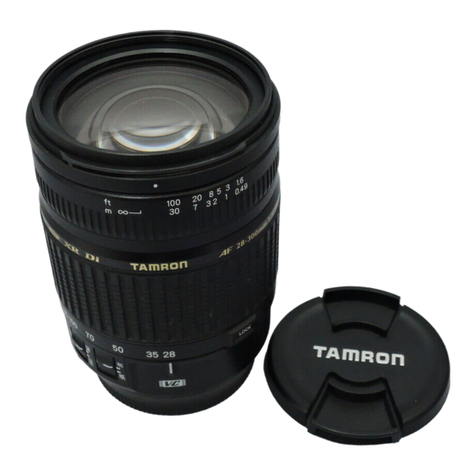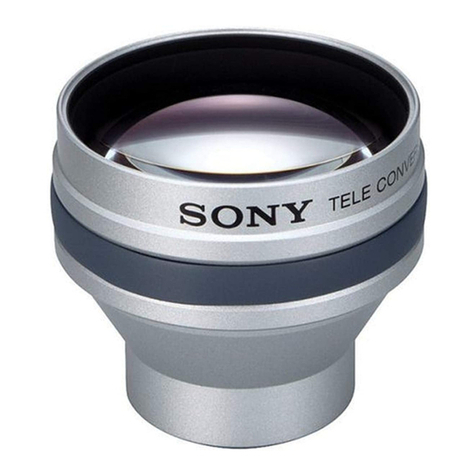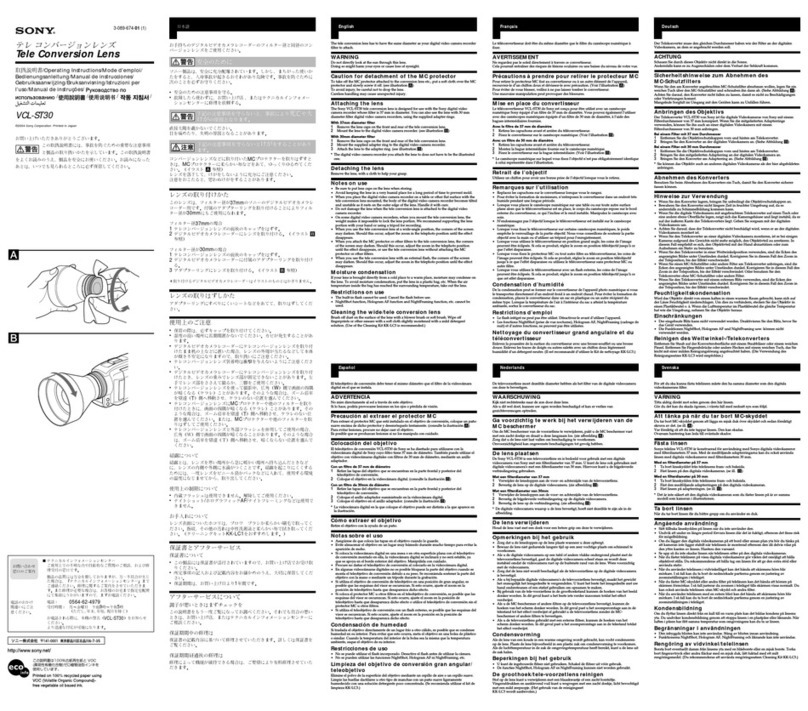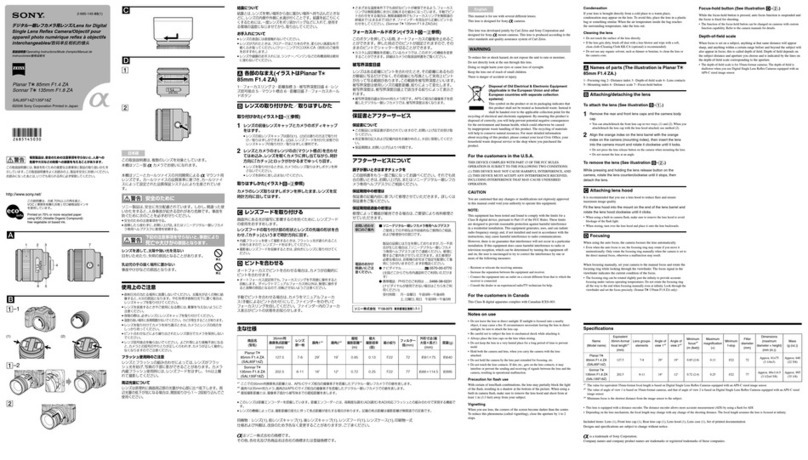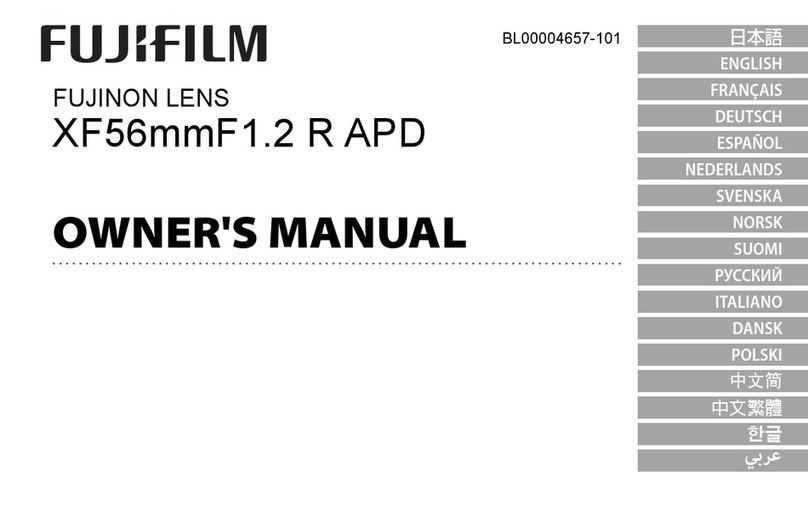CautIOns
when
Usmg
Tamron
Lenses
For safe operation be sure to carefully read the manual
and the following cautions before using. After reading
them, store them in aplace
where
they can easily be
reviewed whenever needed.
In
this manual, caution instructions are divided into
the following two categories:
&
WARNING:
This
indicates instructions which
if
not
heeded
could
lead to death
or
serious injury.
&
CAUTION:
This
indicates instructions which
if
not heeded could
lead to bodily injury
or
physical damage.
&
WARNING
(I)
Do not look directly at the sun through the lens.
Doing so could result in blindness.
(2) Do not leave the lens within the reach
of
young children.
The
lens may fall and injure the child, and the
strap may get wrapped around the
child's
neck,
resulting in suffocation.
&
CAUTION
(I)
Do not leave the lens in places exposed
to
direct sunlight.
The
light reflected
off
the lens may focus
on
a
nearby object, and
cause
afire. Place the lens cap
of
the lens whenever
it
is not in use.
(2)When mounting the lens on the camera,
make
sure the lens and camera are properly set and
securely locked.
The
lens may get slUck if it is not properly
mounted, and
if
it
is not securely locked,
it
may
fall off, damaging the lens
or
camera
or
causing
bodily injury.
(3)Do not modify
or
alter the lens.
Doing so may result in damage to the lens
or
camera.
(4)Mount
the lens hood when taking photographs
in
order to eliminate harmful light rays.
*
The
hood cannot be mounted when certain filters
are installed.
*Remove the hood
if
it causes shadows at the
edges
of
the image when using aflash.
(5)00
not place excessive loads on the lens when it
is
mounted on the camera.
Such
loads may
damage
the mount section on the lens and the camera.
Large lenses tend to place astrong load on the
mount section. Always hold the lens when
operaling and moving the camera.
(6)The focus ring turns during the auto focus
operation. Do not keep Ihe focus ring from turning.
Also,
do
nOI
forcibly turn
the
focus ring by hand
when in the auto focus mode.
Doing so may
damage
the lens
or
the interior
of
the camera.
(7)
Do
not use the lens except for the purpose
of
photographing.
VorslchtsmalJnahmen
bel
der
Benutzung
von
TAMRON-OBjJEKTIVEN
Lesen Sie sich diese Bedienungsanleilung und die
nachfolgend aufgeflihnen VorsichtsmaBnahmen aus
Sicherheilsgrunden vor der Benutzung des Objektivs
sorgfaltig durch. Bewahren Sie die BedienungsanleilUng
anschlieBend an einem leicht zuganglichen
On
auf, damit
Sie
im
Bedarfsfall jederzeit darauf zurlickgreifen konnen.
Die VorsichtsmaBnahmen wurden
in
dieser
Bedienungsanleitung
in
zwei Kategorien unteneilt:
&
WARNUNG:
Hierbei handelt es sieh
urn
VorsichtsmaBnahmen, deren
Niehtbeachtung zum Tod
fUhren
oder ernsthafte
Verletzungen verursachen
Kanno
&
VORSICHT:
Hierbei handelt es sich
urn
VorsichtsmaBnahmen, deren
Nichtbeachtung Korperverletzungen oder physische
Schaden verursaehen
Kanno
&
WARNUNG
(I )Schauen Sie nieht durch das Objektiv hindureh
in
die
Sonne. Dies konnte zu Blindheit
fUhren.
(2) Bewahren Sie das Objektiv auBerhalb der Reichweite
von Kleinkindern auf.
Das Objektiv konnte herunterfallen
und
das Kind
verletzen. Der Riemen konnte sich
urn
den Hals des
Kindes wickeln und eine Erstickung
herbeifUhren.
&
VORSICHT
(I)Legen Sie das Objektiv niemals
an
Platze, an denen es
direktem Sonnenlieht ausgesetzt ware.
Das
Licht konnte sieh aufeinem
in
der Nalte befindlichen
Gegenstand blindeln
und
einen Brand verursachen.
Bringen Sie immer die Kappe
am
Objektiv an, wenn
dieses nieht
in
Benutzung ist.
(2) Oberprufen Sie vor dem Aufsetzen des Objektivs auf
die Kamera,
daB
das Objektiv und die Kamera richtig
zusammengesetzt
und
daB
das
Objektiv
fest
eingerastet
ist.
Das
Objektiv konnte sich festlaufen,
wenn
es
nieht
riehtig
aufgesetzt wurde. Wenn es nieht richtig eingerastet ist,
konnte es herunterfallen
und
sowohl die Kamera als aueh
das Objektiv besehadigen
und
darliberhinaus
Verletzungen verursaehen.
(3)Gestalten Sie das Objektiv nieht
urn
und verandern Sie
es
in
Keiner Weise.
Dies konnte das Objektiv oder die Kamera beschadigen.
(4)Setzen Sie beim Fotografieren die Gegenlichtblende
auf,
urn
schadliche Liehtstrahlen
zu
eliminieren.
*Die Gegenliehtblende kann nicht aufgesetzt werden,
wenn bestimmte Filter installien worden sind.
*Entfemen Sie die Gegenliehtblende, wenn sie bei
Benutzung eins Markierungsfensters Schatten auf
den Bildkanten verursaeht.
(5)Legen Sie keine schweren Gegenstande aufdas auf die
Kamera aufgesetzte Objektiv. Dies konnte
den
Aufsatzteil des Objektivs und die Kamera beschadigen.
GroBe
Objektive neigen dazu, den Aufsetzteil stark zu
belasten. Halten Sie das Objektiv wahrend der
Kamerabenutzung und dem Transport der Kamera
gut fest.
(6)Die Fokussierhlilse dreht sich wahrend der automatisehen
Seharfeinstellung. Behindem Sie dieses Drehen nieht.
Drehen Sie die Fokussierhlilse darliberhinaus nicht
gewaltsam mit der Hand, wenn der Modus
fUr
die
automatische Scharfeinstellung aktiviert ist.
Dies konnte das Objektiv oder die inneren Bauteile der
Kamera beschactigen.
(7)Benutzen Sie Objektiv nur
fUr
den Zweek des
Fotografierens.
Belangrtjk
bi]
het
gebrwk
van
Tamron
lenzen
Met het oog
op
een veilige bediening dient ualvorens de
lens te gebruiken de gebruiksaanwijzing en de volgende
instructies zorgvuldig door te lezen. Bewaar deze na
lezing op een plaats waar ze, zonodig, gemakkelijk
kunnen worden ingezien. [n deze gebruiksaanwijzing
zijn de veiligheidsinstructies ingedeeld in de volgende
twee eategorieen:
&
WAARSCHUWING:
Wanneer de aanwijzingen die
op
deze manier worden
aangegeven niet worden opgevolgd, kan dit leiden tot
ernstig letsel
of
de dood.
&
INSTRUCTlE:
Wanneer de aanwijzingen
die
op
deze
manier worden
aangegeven niet worden opgevolgd, kan dit leiden tot
liehamelijk letsel
of
fysieke schade.
&
WAARSCHUWING
(I)
Kijk met
de
lens niet direct in de zon.
Dit kan resulteren in blindheid.
(2) Houd de lens buiten het bereik van
jonge
kinderen.
De lens kan vallen, waardoor het kind mogelijk
letsel oploopt. De riem kan zich
om
de nek van het
kind wikkelen, met eventuele verstikking tot gevolg.
&
INSTRUCTIE
(I)
Laat de lens niet aehter
op
plaatsen die blootstaan
aan direct zonlieht.
Het lieht dat
door
de lens wordt gereflecteerd kan
zieh richten
op
een object dat zich in de
omgeving
bevindt, waardoor brand kan ontstaan. Haal de
lenskap van
de
lens
wanneer
hij niet in gebruik is.
(2)Zorg
ervoor dat ude lens goed bevestigt
en
vergrendelt wanneer uhem
op
de camera zet. Als
de
lens niet goed bevestigd is, kan hij vast komen te
zitten, en wanneer hij niet goed vergrendeld is, kan
hij van de camera vallen. Hierdoor kunnen de lens
en de
camera
beschadigd worden
of
kan
er
liehamelijk letsel ontstaan.
(3) Breng geen veranderingen
of
wijzigingen aan de
lens aan.
Hierdoor kan de lens
of
de camera beschadigd raken.
(4)Tijdens het maken van
foto's
dient de lenskap op
de lens bevestigd te zijn, zodat
deze
beschermd is
tegen schadelijke lichtstralen.
*De kap kan niet worden bevestigd wanneer
bepaalde filters
op
de lens zijn geplaatst.
*Verwijder
de
kap
wanneer
hij bij hel gebruik van
f1itslicht schaduwen aan de rand van het beeld
veroorzaakt.
(5)Belast de lens niet te zwaar wanneer hij op de camera
is
geplaatst. Hierdoor kan het bevestigingsgedeelte
van de lens
en
de
camera
beschadigd raken. Grote
lenzen kunnen een zware belasting vormen voor het
bevestigingsgedeelte.
Houd
de lens daarom altijd
vasIbij het bedienen
en
bewegen
van de camera.
(6)Tijdens de werking van de auto focus draait de
foeusring rond. Zorg
ervoor
dat hij vrij kan draaien
en forceer de ring niet
door
er
met de hand aan te
draaien wanneer
de
camera
in
de
auto focus modus
staat. Hierdoor kan de lens
of
het binnenwerk van
de
camera beschadigd raken.
(7)Gebruik de lens uitsluitend
om
te fotograferen.
Per
un
corretto
e
sicuro
impiego
degli
obiettivi
Tamron
AI
fine di garantire un corretto esicuro impiego dei
nostri obiettivi,
vi
raccomandiamo di leggere con
attenzione
il
libretto di iSlruzioni e
Ie
precauzioni qui
di
seguilo riponate, prima
di
utilizzare
Ie
apparecchialUre.
In
questa libretto
Ie
segnalazioni relative aile precauzioni
da adottare
sono
suddivise in due calegorie:
&A
TTENZIONE
La non osservanza
di
questa segnalazione di peri
colo
pub comportare grave rischio; ferite 0lesioni personali.
&
PRECAUZIONI
La non osservanza
di
questa segnalazione di pericolo
pub
comportare
danni alia persona 0all'apparecchio.
&A
TTENZIONE
(I)Non
guardate mai direttamente
il
sole attraverso
I'obiettivo: potreste rimanere accecati.
(2)Non
lasciate I'obiettivo
in
luoghi accessibili
ai
bambini piccoli.
L'obiettivo
PUQ
cadere causando Iesioni
al
bambino;
la
tracolla potrebbe attorcigliarsi
al
colla del piccolo,
causandone
il
soffocamento.
&
PRECAUZIONI
(I)Non
lasciate I'obiettivo esposto direttamente ai
raggi del sole.
Iraggi del sole, riflettendosi, potrebbero causare
un incendio. Mettete sempre
il
coperchio
dell'obiettivo quando non si usa
il
dispositivo.
(2)Quando
montale I'obiettivo sui corpo
macchina
controlJate che entrambi siano impostati correttamente
ebloccati
in
modo adeguato. L'obiettivo, in caso
di
montaggio non corretto, potrebbe infatti incepparsi
0,
qualora
non fosse adeguatamente bloccato,
potrebbe cadere rovinandosi col rischio di lesioni
al
fotografo eaile persone che gli sono accanto.
(3)Non
cercate
di
modificare 0alterare I'obiettivo:
potreste danneggiare sia I'obiettivo che
la
fotocamera.
(4)Montate
il
paraluce per eliminare
il
rischio
di
luce parassita.
*
II
paraluce non pub essere montato utilizzando
alcuni tipi di filtri.
*Rimuovete
il
paraluce se utilizzate un obiettivo
stroboscopico: scongiurerete cosi
il
rischio
di
ombreggiature ai bordi
dell'immagine.
(5)
on
gravate
di
pesi eccessivi I'obiettivo
quando
e
montato sulla fOlocamera: potreste
danneggiare
gli
attacchi sia dell'obiettivo
che
della fotocamera.
Gli obiettivi di maggiore dimensioni
gravano
sui
punti di attacco: sostenete I'obiettivo
con
la
mano
durante I'uso ementre
vi
spostate impugnando
la
fotocamera.
(6) La ghiera
di
messa afuoco ruota durante
Ie
operazioni
di
autofocus. Non ostacolatene
il
movimento. Non
forzate mai la ghiera
di
messa afuoco
quando
e
impostata sull'autofocus: I'obiettivo e
il
meccanismo
interno della fOlocamera pOlrebbero danneggiarsi.
(7) Non usate I'obiettivo se non per fo(ografare.
03U6U
